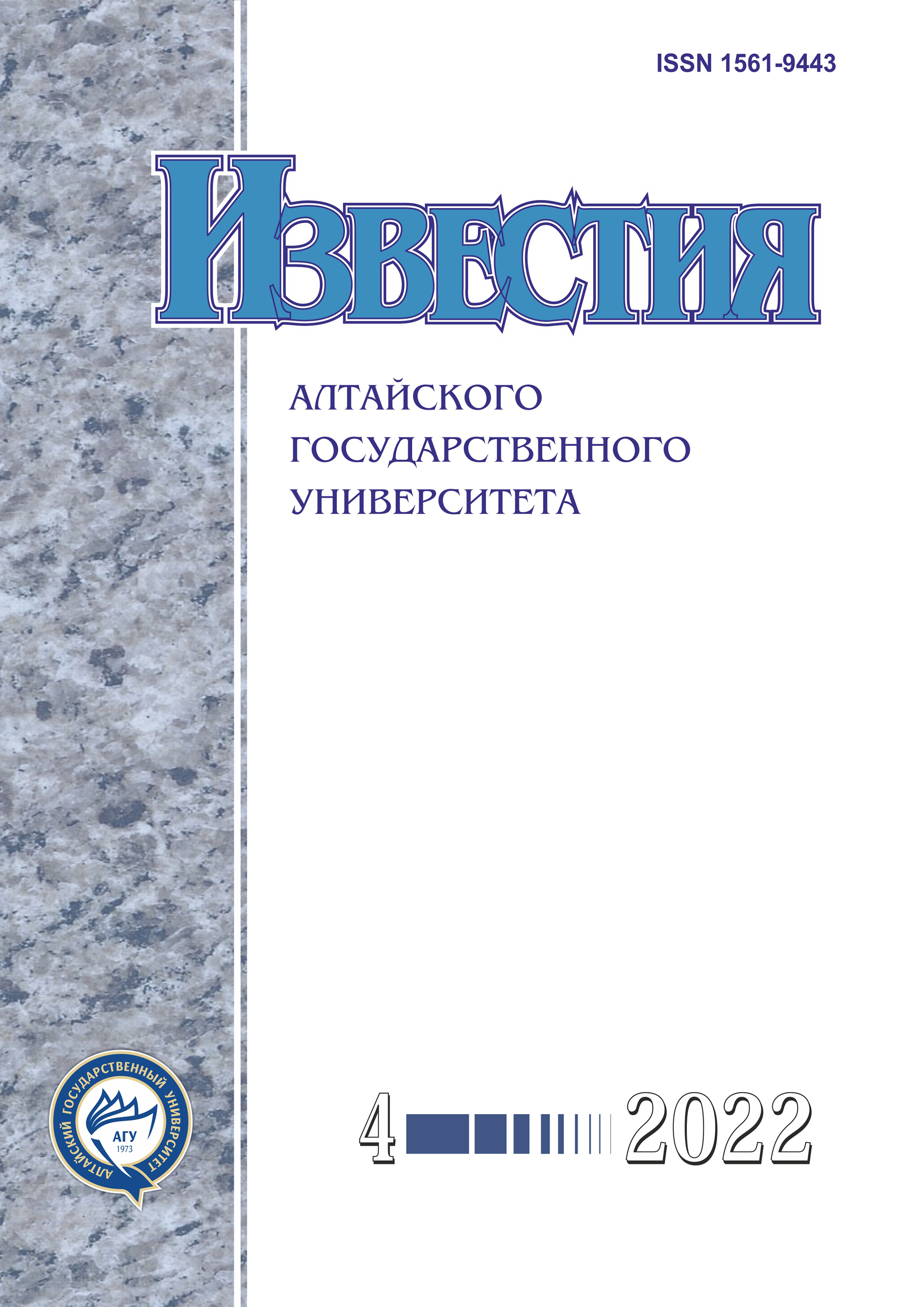Electrical Properties of Cadmium Telluride Films and the Al/CdTe Based Schottky Barrier
УДК 621.315.592
Abstract
It is shown that with an increase in the thickness of cadmium telluride films from 0.4 to 1 μm, the resistivity decreases from 8·108 to 8,1·107 Ohm·cm. It is equivalent to an increase in conductivity from 1,25·10-9 to 1,23·10-8 Ohm-1· cm-1. The resistivity and conductivity change only slightly at thicknesses above 1 μm.
One broad maximum is observed on the X-ray diffraction pattern at film thicknesses D=0.4 μm. This indicates the imperfection of the crystallites. As the thickness increases to 1 μm, a number of clear reflections with increasing intensity appear on the X-ray diffraction pattern, which is associated with the improvement of the crystal structure of the films.
The current-voltage characteristic of the Schottky diode is obtained. It is shown that with an increase in the forward displacement, a significant increase in the forward current is observed, as well as a noticeable increase in the reverse current with a reverse displacement. The initial section of the forward characteristic at voltages up to 10 V is linear, which is inherent in Schottky barriers. However, the characteristic becomes non-linear at high voltages.
The nonlinearity of the current-voltage characteristic of the Schottky barrier in a fairly wide range of applied voltage is related to the grain boundary effect in polycrystalline films. Namely, as the applied voltage increases to a certain value, the density of trap states in the region of the crystallite boundary decreases; holes begin to fill, which is usually observed in semiconductors containing conductive particles in a non-conductive matrix. We used this effect when studying the possibility of manufacturing nuclear radiation detectors with a metal — semiconductor — metal structure.
Downloads
Metrics
References
Чопра К., Дас С. Тонкопленочные солнечные элементы / пер. с англ. с сокр. М., 1986.
Bhattacharya R.N., Rajeshwar K. Heterojunction CdS/ CdTe Solar Cells Based on Electrodeposited p-CdTe Thin Films: Fabrication and Characterization // J. Appl. Phys. 1985. № 58.
Marsillac S., Parikh V.Y., Compaan A.D. Ultra-thin Bifacial CdTe Solarcell // Sol. Energ. Sol. C. 2007. № 91.
Kumar L., Singh B.P., Misra A. Characterization of CdSe x Te 1-x sintered filmsfor photovoltaic applications // Physica B-Condensed Matter 2005. № 1-4.
Kumar V., Khan, K.L., Singh G, Sharma, T.P, Husain M. ZnSe Sintered Films: Growth and Characterization // Appl. Surf. Sci. 2007. Vol. 253. № 7.
Campbell D.S. Handbook of Thin Film Technology / eds. L.I. Maissel, R. Glang ; McGraw-Hill Book Compani. New York. 1970.
Беляев А.П. Зибец В.А., Калинкин И.П. Электрофизические характеристики эпитаксиальных пленок CdTe // Изв. вузов. Физика. 1990. № 3.
Беляев В.П., Рубец В.П., Нуждин М.Ю. Электрические свойства пленок теллурида кадмия, синтезированных в тепловом поле градиента температуры // ФТП. 2003. Т. 37. № 6.
Darwish S. DC electric and photoelectric measurements of CdTe thin films in Schottky-barrier cells // Phys. B. 2004. Vol. 349.
Soshnikov A., Bilevych Ye., Darchuk L., Apatskaya M., Tsybrii Z., Vuychyk M., Boka A., Sizov F. Boelling and B. Sul-kio-Cleff. The influence of substrate materials to the properties of CdTe thin films grown by HWE // Journal of Crystal Growth. 2005.
Clark A.H., Kazmerski L.L. Polycrystalline and Amorphous Thin Film Devices // Academic. New York. 1980.
Султонов Н., Акобирова А.Т., Хамрокулов Р.Б., Наимов УР. Определение высоты барьера Шоттки на контакте металл — пленка СdТe // Наука и инновация. 2014. № 1.
Copyright (c) 2022 Низом Султонов , Азиза Тошпулатовна Акобирова , Раджабмурод Бадриддинович Хамрокулов , Одилджон Вадудович Гафуров , Бадурдин Амируллоевич Рахматов , Умеджон Розибекович Наимов

This work is licensed under a Creative Commons Attribution 4.0 International License.
Izvestiya of Altai State University is a golden publisher, as we allow self-archiving, but most importantly we are fully transparent about your rights.
Authors may present and discuss their findings ahead of publication: at biological or scientific conferences, on preprint servers, in public databases, and in blogs, wikis, tweets, and other informal communication channels.
Izvestiya of Altai State University allows authors to deposit manuscripts (currently under review or those for intended submission to Izvestiya of Altai State University) in non-commercial, pre-print servers such as ArXiv.
Authors who publish with this journal agree to the following terms:
- Authors retain copyright and grant the journal right of first publication with the work simultaneously licensed under a Creative Commons Attribution License (CC BY 4.0) that allows others to share the work with an acknowledgement of the work's authorship and initial publication in this journal.
- Authors are able to enter into separate, additional contractual arrangements for the non-exclusive distribution of the journal's published version of the work (e.g., post it to an institutional repository or publish it in a book), with an acknowledgement of its initial publication in this journal.
- Authors are permitted and encouraged to post their work online (e.g., in institutional repositories or on their website) prior to and during the submission process, as it can lead to productive exchanges, as well as earlier and greater citation of published work (See The Effect of Open Access).








